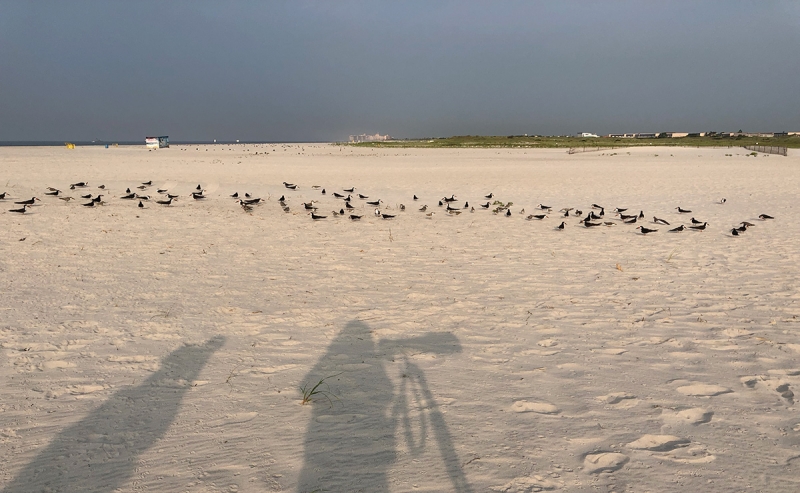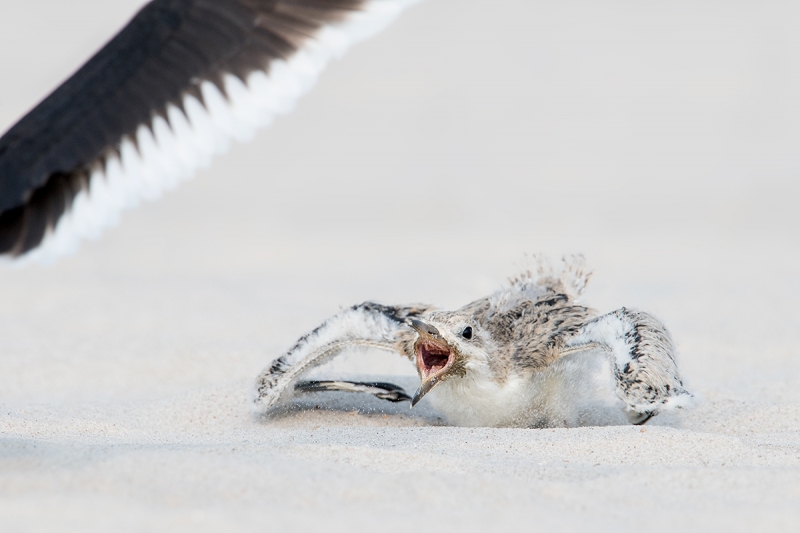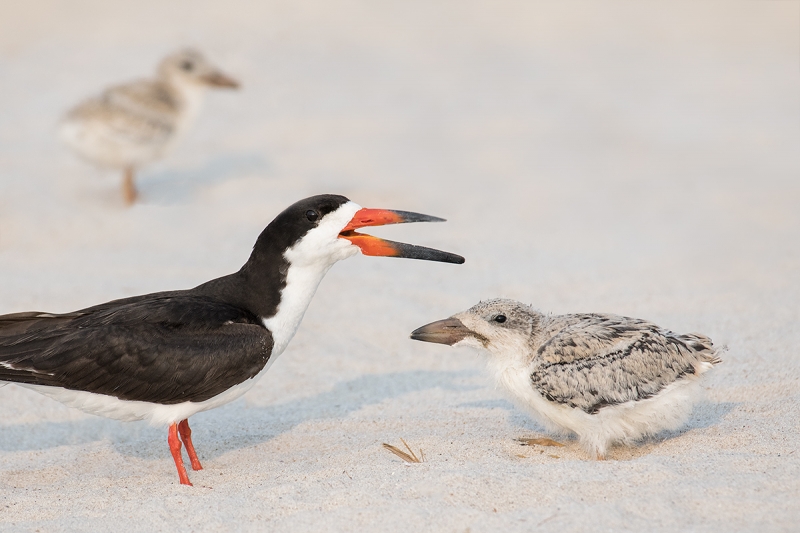Stuff
Nickerson was great on Thursday morning. If you live nearby, consider joining me tomorrow for either a morning or an afternoon session of next Tuesday or Wednesday, all as below. If you would like to make tomorrow morning be sure to call my cell after 4:30pm today and before 8:30pm: 863-221-2372 and in addition, shoot me an e-mail.
From Dianne Heggie via e-mail
I had SUCH a great time today! It’s always inspiring to spend time learning from you. Your generosity in sharing knowledge and insights is really exceptional. I shouldn’t let another 8 years pass before joining you for another workshop! Thanks for your kind words in the post. Very nice! The first thing I did when I got home was to take a nap! I can’t believe you had the energy to put the blog together. Be well!
Dianne
Long Island Small Group Instruction
I am back to my old haunts on Long Island from 15-27 August, prime time for bird photography. The schedules below may be expanded based on demand.
Skimmer Sessions
Join me at Nickerson Beach to photograph Black Skimmers and lots more. Gull predation of young skimmers is likely. With full frame bodies, a minimum of a 500mm lens with TCs is recommended. 400mm OK with crop factor bodies.
Skimmer Morning: Friday AUG, 17, 2018. 5:30 – 9:00am plus a working brunch: $375/session. Limit 4/Openings 3.
Skimmer Afternoon (usually best for flight): Skimmer Afternoon (usually best for flight): Friday, AUG 17, 2018. 5:00pm till sunset: $250/session. Limit 4/Openings 3.
Skimmer Afternoon (usually best for flight): Tuesday AUG 21, 2018. 5:00pm till sunset: $250/session. Limit 4/Openings 3.
Skimmer Morning: Wednesday, AUG, 22, 2018. 5:30 – 9:00am plus a working brunch: $375/session. Limit 4.
Skimmer Afternoon (usually best for flight): Wednesday AUG 22, 2018. 5:00pm till sunset: $250/session. Limit 4/Openings 3.
Please inquire e-mail for multiple session discounts.
To register, please call Jim or Jen with your credit card in hand: 863-692-0906. I hope that you can join me.
|
|
Image #1: Photographer’s shadows and skimmer flock
|
If I’ve Heard It Once I’ve Heard it 1,000 Times!
Over the years I have heard from a friend that the place that I am headed for to do some bird photography sucked. No birds. No good. Nothing exciting. I heard that from BPN Avian Moderator and good friend Isaac Grant on Wednesday afternoon. He had heard that from his friends who knew the place “very well.”
I can assure you that Nickerson did not suck on Thursday morning …
Don’t Forget
Point your shadow at the subject …
The Advantages of Standing
When standing behind your tripod at full height it is a lot easier to get into position without disturbing the birds. And that goes double for older folks if they are no good at butt crawling and if it is harder for them to get back up than it is to get on the ground … A second advantage is that opting for a higher perspective will often eliminate birds from the upper background that would be in the frame had you been lower.
The Advantages of Getting Low
Lots of folks, as I did when I was younger, love to sit or lie on the ground. Leave a comment if you know some of the advantages of choosing a lower perspective.
|
|
|
This image was created on Thursday, August 16 at Nickerson Beach. I used the Induro GIT 304L/Mongoose M3.6-mounted Nikon AF-S NIKKOR 600mm f/4E FL ED VR lens, the Nikon AF-S Teleconverter TC-17E II, and the mega mega-pixel Nikon D850 DSLR.. ISO 400. Matrix metering +2/3 stop: 1/400 sec. at f/10 in Manual mode. AUTO1 WB at 7:13am on the partly cloudy very bright morning. One AF point below the center AF point d-9/Shutter Button/Continuous (AI Servo in Canon) AF was active at the moment of exposure. The selected AF point was squarely on the chick’s face. Phase detection AF Fine-tune value: +1. See the Nikon AF Fine-tune e-Guide here. Image #2: Black Skimmer large chick begging/ducking! |
An Intimate Perspective from On High
Working with long effective focal lengths (600 X 1.7 = 1020mm or 20.4X magnification for the image above) often makes it seem as if you had chosen a much lower perspective even when you are standing. Why? Your angle of declination (the angle in degrees from the plane of the lens point parallel to the ground to the plane of the lens pointed at the subject) is not steep at all … Compare the image above with the one you would make by walking up to a tame chick and pointing the lens down 45 degrees to fill half the width of the frame with the subject …
|
|
|
This image was also created on Thursday, August 16 at Nickerson Beach. Dianne Heggie used the tripod mounted Nikon AF-S NIKKOR 200-500mm f/5.6E ED VR lens, the Nikon AF-S Teleconverter TC-14E III, and the mega mega-pixel Nikon D850 DSLR.. ISO 800. Matrix metering +2/3 stop: 1/640 sec. at f/9 in Manual mode. AUTO1 WB at 7:34am on the partly cloudy very bright morning. Image #3: Black Skimmer — adult with two chicks
|
Way To Go Dianne
Mazel tov to Dianne Heggie and husband Reggie on their recent retirements, she from a 40-year career as a Social Worker, he from IT. Dianne is a multiple IPT veteran having been crawling in the mud with me at Jamaica Bay in about 1997 and on a Nickerson Beach IPT in 2011 or so. Image #2 above is Dianne’s. I did the Photoshop work over lunch at the Diner Luxe in Bethpage. We both had a great time photographing and catching up.
Post-processing Questions
Is one of today’s two featured images (#s 2 & 3) pretty much right out of camera? If not, which of the two had the most work done in Photoshop? If you see any telltale signs of manipulation (my favorite word!), please leave a comment and explain your proof. Remember, this stuff is much more difficult when you do not see the original 🙂 I will post JPEGs here at some point representing the full frame RAW captures for both featured images. You might be shocked. Either way.
Help Support the Blog
Please help support my efforts here on the blog by remembering to click on the logo link above each time that you shop Amazon. That would be greatly appreciated. There is no problem using your Prime account; just click on the link and log into your Prime account. With love, artie
If In Doubt …
If in doubt about using the BAA B&H affiliate link correctly, you can always start your search by clicking here. Please note that the tracking is invisible. Web orders only. Please, however, remember to shoot me your receipt via e-mail.




Please Remember to use my Affiliate Links and to Visit the New BAA Online Store 🙂
To show your appreciation for my continuing efforts here, we ask, as always, that you get in the habit of using my B&H affiliate links on the right side of the blog for all of your photo and electronics purchases. Please check the availability of all photographic accessories in the New BIRDS AS ART Online Store, especially the Mongoose M3.6 tripod head, Wimberley lens plates, Delkin flash cards and accessories, and LensCoat stuff.
As always, we sell only what I have used, have tested, and can depend on. We will not sell you junk. We know what you need to make creating great images easy and fun. And please remember that I am always glad to answer your gear questions via e-mail.
I would of course appreciate your using our B&H affiliate links for all of your major gear, video, and electronic purchases. For the photographic stuff mentioned in the paragraph above, and for everything else in the new store, we, meaning BAA, would of course greatly appreciate your business. Here is a huge thank you to the many who have been using our links on a regular basis and those who will be visiting the New BIRDS AS ART Online Store as well.
Be sure to like and follow BAA on Facebook by clicking on the logo link upper right. Tanks a stack.
Typos
In all blog posts and Bulletins, feel free to e-mail or to leave a comment regarding any typos or errors. Just be right :).

















Hi Artie,
You are correct! My recent encounters with shorebirds were from close range. The kneeling angle was significant, but it was not 45 degrees. I also think an image exaggerates the angle which is why it is important to get low or use a very long focal length.
In general, getting low produces a more pleasing image but it is important to understand that that has very little to do with depth of field (as I explained previously)
I am confusing our discussion by mixing variables (apples and oranges). My comments are based on a series of shorebird images and there is overlap among variables as I assess each image. A poor angle combined with a shallow depth of field might lead me to conclude incorrectly that it is the angle and not the f-stop that is resulting in parts of the bird being out of focus.
Agree. In order to compare you need to photograph a sleeping bird when you are standing at a given shutter speed and aperture and then get down lower while keeping the camera body the same distance from the bird. I am betting that you would not see any differences in what is sharp and what is not 🙂
Again, many thanks for your comments. By challenging my thought processes, you are making me a more competent photographer!
Don M.
You are most welcome. Thanks for commenting in the first place and sticking with this.
With love, artie
ps: Imagine how much you would learn by joining ann Instructional Photo-Tour and asking questions!
Hi Artie,
Thanks for your comments!
I was using the D500/200-500mm, and my unadjusted focal length ranged from 270-500mm for most images.
I agree completely with your bokeh explanation and you are right to question my statement concerning focus plane. This was my logic.
When the camera is on the same plane as the bird, the top and bottom of the lens are equidistant from the bird. If the angle is 45 degrees downward, the top of the lens is closer to the subject and the bottom is further away. In theory, less of the bird is in focus if it is filling the frame.
#1: You would never be photographing at 45 degrees with a telephoto lens unless you were on a ladder 🙂
#2: Assuming that you are correctly focusing on the bird’s eye, and difference in how much of the subject is in focus would be negligible at best (at least to the human eye).
In reality, this difference might not be perceptible depending on the depth of field, the orientation of the bird and the distance to the subject. All of this to say that it would be difficult for me to state objectively that my camera angle was influencing how much of the bird was in focus.
I agree that there will be no discernible difference in how much of the bird is in focus whether you are working with a 30 degree angle of declination or a five degree angle of declination …
I’ve become more sensitive to small depth of field differences as I shift from a 560mm/f8 (Canon system) to a 750mm/f5.6 (Nikon system). I’m seeing more situations where a bird’s eye is in focus, but its feet are not.
I am confused by the above as you seem to be comparing apples and oranges …
I’ve also been very lucky recently to encounter shorebirds that are comfortable with my presence.
Yes, the young birds in August will do that.
Because they are closer, my depth of field is even narrower.
We can agree on that. It is a point that I stress here often: you most need to stop down when you are very close to the subject. I like to keep things simple: whether I am standing or sitting or lying flat, I generally work stopped down only 1/3 stop and focus on the bird’s eye. If the subject fills more than half the frame I will usually stop down to f/8 or smaller.
Thanks again,
Don M.
YAW. with love, artie
Hi Artie,
I photographed a Baird’s Sandpiper yesterday for several hours while it was foraging. I used a range of body positions – mostly kneeling, deep squats and knees/elbows. Today, I am feeling it!
I hear you. No deep squats for me 🙂
Most of my best shots were from knees/elbows or deep squats. The lower angle created a stronger connection with the sandpiper. More of the bird was in focus because it was on the same plane as my camera.
I agree with the first statement but am not buying the second, at least as far as human vision is capable of detecting … What focal length were you using?
Where?
The bokeh was better in the foreground and background.
Because boken has to do with the lens and the aperture, the boken is the same whether you are low or high; the reason the background looks so much better when you are low is because when you are looking down on a subject you are seeing more of the immediate background (and its usually ugly details). As you get low, the more distant background often shows little detail and is rendered a lot softer. Similarly, more of the foreground is often pleasingly out of focus.
I also found the sandpiper was more comfortable with my presence because I was lower to the ground. I had to stop shooting several times because it was too close. You can see the images on the shorebird section of my website.
Absolutely.
When don’t I go low? I will stay tall with a distracting background, if I need to shoot over a rise or foreground objects such as tall grasses. I also find that heat distortion can be more of a problem when I am too close to the ground.
Perhaps on the latter …
If I anticipate being stationary and low for an extended period of time I bring – you will laugh – a booster seat that my kids used when they were young. It is light (base only, no back) and easy to cary because it has handles on both sides. I can sit for hours, the angle is great, it also protects my knees if I kneel on sharp ground. It is ideal for a group of stationary birds such as the skimmer colony in your photo. You can slowly inch towards the birds, or wait until they approach you.
That sounds great.
with love, and thanks for commenting, artie
Best wishes,
Don
Hey Arthur, Getting low you will be at eye level with the birds. Gives more of a intimate perspective.The plane of focus will also be very narrow. The background will be nice and out of focus. I am going to say both images are pretty much straight out of the camera. Maybe some minor clean up of some beach debris.
Hi John,
Thanks for commenting. From my reply to Don M above as far as plane of focus (or depth of field if I am understanding you correctly …):
The reason the background looks so much better when you are low is because when you are looking down on a subject you are seeing more of the immediate background (and its usually ugly details). As you get low, the more distant background often shows little detail and is rendered a lot softer. Similarly, more of the foreground is often pleasingly out of focus.
More on the post processing soon.
with love, artie
From the same distance with the same aperture the depth of field is the same.
Artie, I would guess image #2 because of the way the background is blurred.
Good thinking.
with love, artie
Hi, Artie. This seems like a trick question because you said you did Photoshop work on Dianne Heggie’s fine image over lunch. The sand at Nickerson is pretty clean but I’m not sure it’s quite as clean as in image #2, the begging chick. There certainly isn’t an internal clue in the images that I can detect. If Isaac Grant wasn’t at Nickerson, why would he say that it sucked? The only negative thing for me at Nickerson wasn’t a lack of birds–the place was loaded with birds–but the placement of a fence that made it hard to get as close as I wanted, for no obvious good reason.
Hi David,
Yes, a trick question. I will post the originals soon. The sand at Nickerson can be perfectly smooth and debris free, or it can be disturbed by thousands of footprints (human and avian!) and littered with dead grasses and stem and the like as well as by plain old trash.
As for Isaac’s comments, you gotta read the sentence to the end 🙂 :
No birds. No good. Nothing exciting. I heard that from BPN Avian Moderator and good friend Isaac Grant on Wednesday afternoon. He had heard that from his friends who knew the place “very well.”
On Thursday the birds were on the beach outside the ropes 🙂
with love, artie